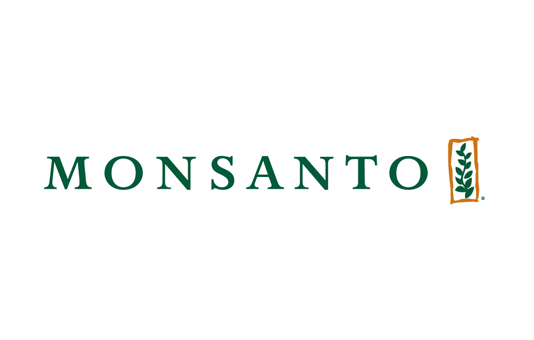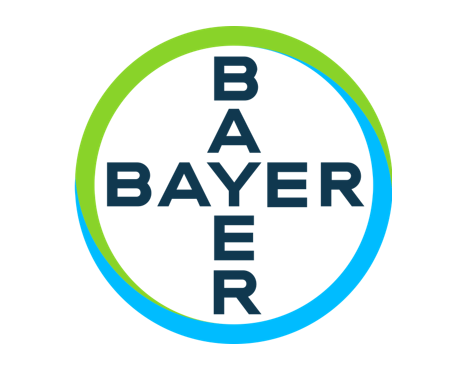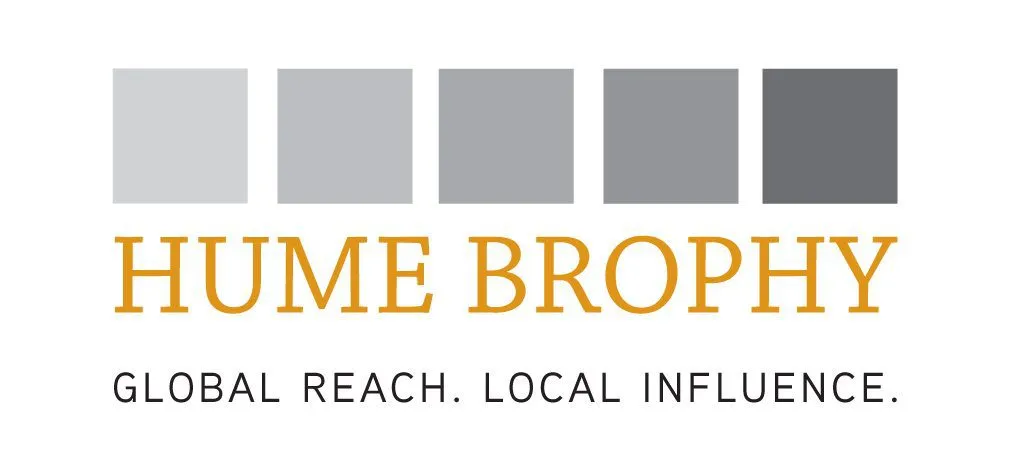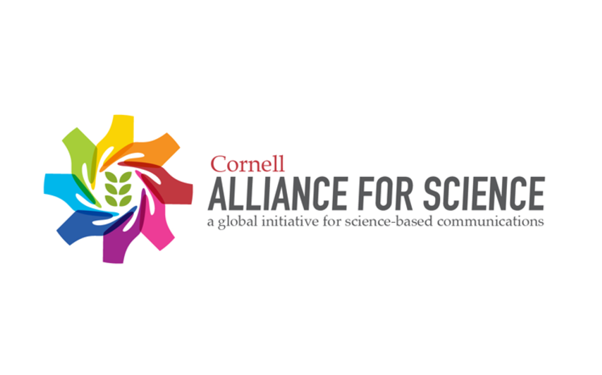Background
Founded in 1901 — and now a part of Bayer — Monsanto was involved in some of the biggest chemical and environmental controversies of the 20th century.
Monsanto got its start selling the artificial sweetener saccharin to Coca-Cola.1“From sweeteners to seeds: A timeline of Monsanto’s evolution,” St. Louis Post-Dispatch. September 14, 2016. Archived January 5, 2024. Archive URL: https://archive.ph/PGYv3 During World War I, the company moved into manufacturing chemicals in the US as European imports were cut off.2Donald L. Barlett, James B. Steele. “Monsanto’s Harvest of Fear,” Vanity Fair, April 2, 2018. Archived November 9, 2020. Archive.fo URL: https://archive.fo/p9TID In the 1920s, they began manufacturing polychlorinated biphenyls (PCBs), sulfuric acid and other chemicals.3“Toxic Substances Portal – Polychlorinated Biphenyls (PCBs),” Agency for Toxic Substances & Disease Registry. Archived November 9, 2020. Archive.fo URL: https://archive.fo/k8xu They moved into manufacturing synthetic fabrics and plastics in the 1940s, Agent Orange in the 1960s, and food biotechnology in the 1990s.4Reuters Staff. “CORRECTED: Timeline: History of Monsanto Co,” Reuters, November 11, 2019. Archived November 9, 2020. Archive.fo URL: https://archive.fo/MuZPb 5“Monsanto,” Britannica. Archived November 10, 2020. Archive.fo URL: https://archive.fo/Vig5T
Over its history, Monsanto has manufactured a huge array of industrial and consumer products including vinyl siding, anti-freeze, polystyrene (used in Styrofoam) and the fibers used in Astroturf. Monsanto aided the US Manhattan Project, which led to the development of nuclear bombs during World War II, participating in plutonium purification and production.6GMO Awareness. “Monsanto’s Dirty Dozen. Twelve Products that Monsanto has Brought to Market,”Centre for Research on Globalisation, May 12, 2011. Archived November 9, 2020. Archive.fo URL: https://archive.fo/H1CH3
Bayer first placed its bid for Monsanto in 2016 and closed the $63 billion deal in June 2018.7Ruth Bender. “How Bayer-Monsanto became one of the worst corporate deals – in 12 charts,” The Wall Street Journal, August 28, 2019. Archived .pdf on file at DeSmog.
Stance on Climate Change
In 2009, Monsanto received the “Angry Mermaid Award,” a mock honor announced by author Naomi Klein on behalf of environmental group Friends of the Earth and corporate watchdog Spinwatch, for promoting GMO crops as a way for farmers to accommodate climate change8Alexis Baden Mayer, Ronnie Cummins.“Why Monsanto Won the Angry Mermaid Award,” Organic Consumers Association. Archived November 9, 2020. Archive.fo URL: https://archive.fo/21kJy (in an early version of the precision agriculture strategies heavily promoted by pesticides makers today), for pushing a questionable strategy of using its crops for biofuels, and for its products’ role in deforestation in Latin America and greenhouse gas pollution.9John Upton. “Study Finds Biofuels Worse for Climate than Gasoline,” Climate Central, August 25, 2016. Archived November 9, 2020. Archive.fo URL: https://archive.fo/supSb
In 2013, Monsanto acquired Climate Corporation,10Michael Specter. “Why the Climate Corporation Sold Itself to Monsanto,” The New Yorker, November 4, 2013. Archived November 10, 2020. Archive.fo URL: https://archive.fo/tiqXR which played an early role in developing and marketing digital and precision agriculture strategies.11Don Jergler. “How Monsanto’s Climate Unit is Changing Risk Profile of Farmers,” Insurance Journal, August 25, 2016. Archived November 10, 2020. Archive.fo URL: https://archive.fo/zFlsA “The Climate Corporation is focused on unlocking new value for the farm through data science,” CEO Hugh Grant said at the time — “Everyone benefits when farmers are able to produce more with fewer resources.” PrecisionAg, a trade publication, later called Climate Corp. the “Jewel in Bayer’s Monsanto Deal Crown,” arguing that the purchase would give Bayer a foothold in “digital farming”.12Matthew J. Grassi. “OPINION: Climate Corp. is the jewel in Bayer’s Monsanto Deal Crown,” Precision Ag, September 15, 2016. Archived November 10, 2020. Archive.fo URL: https://archive.fo/CuBqj
Monsanto’s early role in marketing digital/precision farming and regenerative agriculture-style strategies, as well as other Monsanto climate change-linked products, drew public backlash over charges that Monsanto sought to “profit off climate change,” as Mother Jones magazine described it in 2013.13Maggie Severns. “5 Ways Monsanto Wants to Profit Off Climate Change,” Mother Jones, October 9, 2013. Archived November 10, 2020. Archive.fo URL: https://archive.fo/scs60
Monsanto nonetheless continued to market GMO’s and other products as ways farms could insulate themselves against the impacts of a changing climate: “Today, no single issue will impact the world and the success of our farmer customers, our partners and our company more than sustainability, which includes our ability to adapt to and mitigate the impacts of climate change,” CEO Hugh Grant said in 2015.14Robert Holly. “GMOs, Monsanto and the fight against climate change,” Investigate MidWest, July 9, 2015. Archived November 10, 2020. Archive.fo URL: https://archive.fo/qylXB
Read more: Digital and Precision Agriculture – Criticisms and Concerns
In 2016, Monsanto commissioned a report by consulting firm ICF International, which said that the farming sector could help to sequester 100 million metric tons of greenhouse gases through regenerative agriculture practices like sowing cover crops and using no-till farming, as well as precision agriculture technology.15Leon Kaye. “Monsanto: Farming Has a Critical Role in Fighting Climate Change,” Triple Pundit, August 30, 2016. Archived November 10, 2020. Archive.fo URL: https://archive.fo/b5zBw
Before it was bought by Bayer, Monsanto also marketed a “Carbon Neutral Crop Production” plan that involved “data-enabled precision agriculture,” “biotech plants,” and the use of cover crops and “reduced tillage” tactics.16“Advancing Products and Practices to Fight Climate Change,” Monsanto. Archived November 10, 2020. Archive.fo URL: https://archive.fo/bMQxa
While not all forms of no-till agriculture rely on glyphosate, the pesticide and the company’s GMO seeds are often associated with some forms of no-till farming. “Glyphosate and Roundup Ready crops have played a key role in the growth of agriculture and even helped boost adoption of no-till practices,” trade publication No-Till Farmer reported in 2017. But, the publication warned, there was emerging evidence that using glyphosate could potentially damage soil health, which plays an important role in no-till farming.17John Dobberstein. “Is Glyphosate Harming Your No-Tilled Soils?,” No-Till Farmer, October 28, 2017. Archived November 10, 2020. Archive.fo URL: https://archive.fo/v2CCk
Read more: Regenerative Agriculture – Criticisms and Concerns
Role in Pesticides Controversy
The company had a long involvement with pesticides — including many that later became notorious for their impacts on people’s health and the environment.
In 1944, Monsanto began manufacturing the insecticide DDT, a chemical made notorious by Rachael Carson’s book Silent Spring (which is credited with kickstarting the environmentalist movement in the United States).18GMO Awareness. “Monsanto’s Dirty Dozen. Twelve Products that Monsanto has Brought to Market,”Centre for Research on Globalisation, May 12, 2011. Archived November 9, 2020. Archive.fo URL: https://archive.fo/H1CH3
In the mid-1940’s Monsanto also started manufacturing a herbicide called 2,4,5-T, part of a chemical group that later became known as dioxins.19Donald L. Barlett, James B. Steele. “Monsanto’s Harvest of Fear,” Vanity Fair, April 2, 2018. Archived November 9, 2020. Archive.fo URL: https://archive.fo/p9TID Dioxins proved to be both highly toxic and carcinogenic — they are one of what the World Health Organization has labeled the “dirty dozen” chemicals because they’re both dangerous and persistent in the environment.20“Dioxins and their effects on human health,” World Health Organisation, October 4, 2016. Archived November 10, 2020. Archive.fo URL: https://archive.fo/tlQse Monsanto’s agricultural division got its start in the 1960’s. 2,4,5-T became one of two ingredients in the defoliant Agent Orange, used by the US military during the Vietnam War. Workers who made those chemicals as well as residents of towns around Monsanto’s plant21“Veterans and Agent Orange: Health Effects of Herbicides Used in Vietnam,” Institute of Medicine (US) Committee to Review the Health Effects in Vietnam Veterans of Exposure to Herbicides. National Academies Press, Washington DC. (1994). Archived November 10, 2020. Archive.fo URL: https://archive.fo/R4ZEw and the military veterans who used Agent Orange22Charles Ornstein, Hannah Fresques, Mike Hixenbaugh. “The Children of Agent Orange,” ProPublica, December 16, 2016. Archived November 10, 2020. Archive.fo URL: https://archive.fo/ZVoDt later sued Monsanto over their exposure to dioxins.23Donald L. Barlett, James B. Steele. “Monsanto’s Harvest of Fear,” Vanity Fair, April 2, 2018. Archived November 9, 2020. Archive.fo URL: https://archive.fo/p9TID
In 1976, the company began marketing Roundup, an herbicide made with glyphosate.24Crystal Gammon. “Weed-Whacking Herbicide Proves Deadly to Human Cells,” Scientific American, June 23, 2009. Archived November 10, 2020. Archive.fo URL: https://archive.fo/4XyVl In the 1990’s Monsanto introduced “Roundup Ready” genetically modified crops including soybeans and corn, designed to survive the application of Roundup while weeds would not.25Reuters Staff. “CORRECTED: Timeline: History of Monsanto Co,” Reuters, November 11, 2019. Archived November 9, 2020. Archive.fo URL: https://archive.fo/MuZPb
In the late 1990’s, Monsanto spun off its chemicals and fibers divisions, focusing on making itself a “life sciences” company.26Donald L. Barlett, James B. Steele. “Monsanto’s Harvest of Fear,” Vanity Fair, April 2, 2018. Archived November 9, 2020. Archive.fo URL: https://archive.fo/p9TID
The Wall Street Journal later labeled Bayer’s 2018 acquisition of Monsanto “one of the worst corporate deals in recent memory,” as just weeks after the deal closed, the company began losing lawsuits alleging that Monsanto’s Roundup pesticide27Ruth Bender. “How Bayer-Monsanto became one of the worst corporate deals – in 12 charts,” The Wall Street Journal, August 28, 2019. Archived .pdf on file at DeSmog. — marketed until 1996 as “practically non-toxic” and safer than table salt — caused cancer.28“Monsanto Agrees to Modify Roundup Ads in New York State,” Associated Press, November 25, 1996. Archived November 10, 2020. Archive.fo URL: https://archive.fo/CQvS0
In 2019, the New York Times noted that glyphosate was “the most widely used agricultural chemical in history.” In June 2020, Bayer,29Patricia Cohen. “Roundup Weedkiller Is Blamed for Cancers, but Farmers Say It’s Not Going Away,” The New York Times, September 20, 2019. Archived November 10, 2020. Archived .pdf on file at DeSmog. which had acquired Monsanto before Roundup’s dangers were publicly known, agreed to pay $10 billion to settle tens of thousands of lawsuits alleging that Roundup caused people to develop cancer. The settlement includes $1.25 billion for a panel that will examine whether glyphosate, Roundup’s key ingredient, causes cancer and if so, at what levels of exposure.30Patricia Cohen. “Roundup Maker to May Billion to Settle Cancer Suits,” The New York Times, June 24, 2020. Archived .pdf on file at DeSmog.
That settlement followed a string of jury trials in which juries determined that Roundup had caused cancers and that Monsanto had failed to warn users of its dangers,31Patricia Cohen. “Roundup Maker to May Billion to Settle Cancer Suits,” The New York Times, June 24, 2020. Archived .pdf on file at DeSmog. leading to verdicts as high as $2 billion for a northern California couple who had both developed the same form of cancer (verdicts that were later reduced and that Bayer appealed).32Patricia Cohen. “ Billion Verdict Against Monsanto Is Third to Find Roundup Caused Cancer,” The New York Times, May 13, 2019. Archived November 10, 2020. Archived .pdf on file at DeSmog.
Monsanto also worked with BASF to develop a herbicide known as dicamba, which was designed to overcome Roundup resistant weeds that had appeared on millions of acres of US farms, The Guardian reported in March 2020. Dicamba, the newspaper noted, was first used in the 1960’s but rarely, because it tended to drift off farms and kill plants as it moved. In 2011, Monsanto and BASF had sought to market new uses for dicamba, the Guardian reported, despite being warned privately as early as 2009 that the consequences could be “catastrophic.”33Carey Gillam. “Revealed: Monsanto predicted crop system would damage US farms,” The Guardian, March 30, 2020. Archived November 10, 2020. Archive.fo URL: https://archive.fo/bJx9C
In February 2020, a jury reached a $265 million verdict in favor of two Missouri peach farmers whose 30,000 peach trees were damaged by drifting dicamba, finding Monsanto and BASF liable.34Amanda Bronstad. “After 5M Verdict, Could Dicamba Be Another Herbicide Problem for Monsanto?,” Law.Com, February 24, 2020. Archived November 10, 2020. Archive.fo URL: https://archive.fo/JOiSy
In June 2020, Bayer announced a settlement of up to $400 million covering a group of other dicamba drift lawsuits, adding that it would separately appeal the $265 million peach farm verdict.35“Bayer Announces Agreements to Resolve Major Legacy Monsanto Litigation,” Bayer, June 24, 2020. Archived November 10, 2020. Archive.fo URL: https://archive.fo/Rp0zC
Lobbying
A New York Times report from 2001 described Monsanto’s “political power with deep connections in Washington” in the 1980s and 1990s: “What Monsanto wished for from Washington, Monsanto — and, by extension, the biotechnology industry — got. If the company’s strategy demanded regulations, rules favored by the industry were adopted.”36Kurt Eichenwald. “Redesigning Nature: Hard Lessons Learned; Biotechnology Food: From the Lab to a Debacle,” The New York Times, January 25, 2001. Archived November 10, 2020. Archived .pdf on file at DeSmog.
In the 2016 US election, the last full cycle before Monsanto was bought by Bayer, the company spent $926,466 on lobbying expenditures, data from OpenSecrets.org shows.37“Monsanto Co,” OpenSecrets. Archived November 10, 2020. Archive.fo URL: https://archive.fo/Gwp7B
From January to December 2018, the latest year for which data is available, Monsanto spent between €1,250,000 – €1,499,999 on EU lobbying on “providing solutions to EU farmers and offering choice of safe and sustainable agricultural products”, data from LobbyFacts.eu shows.38“Monsanto”, LobbyFactsEU. Archived November 10, 2020. Archive.fo URL: https://archive.fo/iFGFh
Monsanto held four meetings with members of the EU Commission between 2014 and 2019, according to Transparency International’s Integrity Watch database.39“Integrity Watch – Commission Meetings,” Transparency International. Archived November 10, 2020. Archive.fo URL: https://archive.fo/HHyVV
Affiliations
Monsanto was a member of Croplife International.40“CropLife International,” LobbyWatch. Archived November 10, 2020. Archive.fo URL: https://archive.fo/uhrAx
Monsanto was also affiliated with the following organisations, in 2018, according to LobbyFacts.eu data:41“Monsanto”, LobbyFactsEU. Archived November 10, 2020. Archive.fo URL: https://archive.fo/iFGFh
- European Seed Assoc
- European Crop Protection Association
- EuropaBio
- European Bio-stimulants Industry Council
- GTF
- ILSI Europe42“Monsanto”, LobbyFactsEU. Archived November 10, 2020. Archive.fo URL: https://archive.fo/iFGFh
Monsanto has recruited advisory board members from the Cornell Alliance for Science, and investigations group US Right to Know says FOIA-obtained emails show the groups closely “coordinating”.43Stacy Malkan. “Cornell Alliance for Science is a PR Campaign for the Agrichemical Industry,” US Right to Know, September 23, 2020. Archived November 10, 2020. Archive.fo URL: https://archive.fo/etg9p
Other Resources
- “Monsanto,” Sourcewatch.
Resources
- 1“From sweeteners to seeds: A timeline of Monsanto’s evolution,” St. Louis Post-Dispatch. September 14, 2016. Archived January 5, 2024. Archive URL: https://archive.ph/PGYv3
- 2Donald L. Barlett, James B. Steele. “Monsanto’s Harvest of Fear,” Vanity Fair, April 2, 2018. Archived November 9, 2020. Archive.fo URL: https://archive.fo/p9TID
- 3“Toxic Substances Portal – Polychlorinated Biphenyls (PCBs),” Agency for Toxic Substances & Disease Registry. Archived November 9, 2020. Archive.fo URL: https://archive.fo/k8xu
- 4Reuters Staff. “CORRECTED: Timeline: History of Monsanto Co,” Reuters, November 11, 2019. Archived November 9, 2020. Archive.fo URL: https://archive.fo/MuZPb
- 5
- 6GMO Awareness. “Monsanto’s Dirty Dozen. Twelve Products that Monsanto has Brought to Market,”Centre for Research on Globalisation, May 12, 2011. Archived November 9, 2020. Archive.fo URL: https://archive.fo/H1CH3
- 7Ruth Bender. “How Bayer-Monsanto became one of the worst corporate deals – in 12 charts,” The Wall Street Journal, August 28, 2019. Archived .pdf on file at DeSmog.
- 8Alexis Baden Mayer, Ronnie Cummins.“Why Monsanto Won the Angry Mermaid Award,” Organic Consumers Association. Archived November 9, 2020. Archive.fo URL: https://archive.fo/21kJy
- 9John Upton. “Study Finds Biofuels Worse for Climate than Gasoline,” Climate Central, August 25, 2016. Archived November 9, 2020. Archive.fo URL: https://archive.fo/supSb
- 10Michael Specter. “Why the Climate Corporation Sold Itself to Monsanto,” The New Yorker, November 4, 2013. Archived November 10, 2020. Archive.fo URL: https://archive.fo/tiqXR
- 11Don Jergler. “How Monsanto’s Climate Unit is Changing Risk Profile of Farmers,” Insurance Journal, August 25, 2016. Archived November 10, 2020. Archive.fo URL: https://archive.fo/zFlsA
- 12Matthew J. Grassi. “OPINION: Climate Corp. is the jewel in Bayer’s Monsanto Deal Crown,” Precision Ag, September 15, 2016. Archived November 10, 2020. Archive.fo URL: https://archive.fo/CuBqj
- 13Maggie Severns. “5 Ways Monsanto Wants to Profit Off Climate Change,” Mother Jones, October 9, 2013. Archived November 10, 2020. Archive.fo URL: https://archive.fo/scs60
- 14Robert Holly. “GMOs, Monsanto and the fight against climate change,” Investigate MidWest, July 9, 2015. Archived November 10, 2020. Archive.fo URL: https://archive.fo/qylXB
- 15Leon Kaye. “Monsanto: Farming Has a Critical Role in Fighting Climate Change,” Triple Pundit, August 30, 2016. Archived November 10, 2020. Archive.fo URL: https://archive.fo/b5zBw
- 16“Advancing Products and Practices to Fight Climate Change,” Monsanto. Archived November 10, 2020. Archive.fo URL: https://archive.fo/bMQxa
- 17John Dobberstein. “Is Glyphosate Harming Your No-Tilled Soils?,” No-Till Farmer, October 28, 2017. Archived November 10, 2020. Archive.fo URL: https://archive.fo/v2CCk
- 18GMO Awareness. “Monsanto’s Dirty Dozen. Twelve Products that Monsanto has Brought to Market,”Centre for Research on Globalisation, May 12, 2011. Archived November 9, 2020. Archive.fo URL: https://archive.fo/H1CH3
- 19Donald L. Barlett, James B. Steele. “Monsanto’s Harvest of Fear,” Vanity Fair, April 2, 2018. Archived November 9, 2020. Archive.fo URL: https://archive.fo/p9TID
- 20“Dioxins and their effects on human health,” World Health Organisation, October 4, 2016. Archived November 10, 2020. Archive.fo URL: https://archive.fo/tlQse
- 21“Veterans and Agent Orange: Health Effects of Herbicides Used in Vietnam,” Institute of Medicine (US) Committee to Review the Health Effects in Vietnam Veterans of Exposure to Herbicides. National Academies Press, Washington DC. (1994). Archived November 10, 2020. Archive.fo URL: https://archive.fo/R4ZEw
- 22Charles Ornstein, Hannah Fresques, Mike Hixenbaugh. “The Children of Agent Orange,” ProPublica, December 16, 2016. Archived November 10, 2020. Archive.fo URL: https://archive.fo/ZVoDt
- 23Donald L. Barlett, James B. Steele. “Monsanto’s Harvest of Fear,” Vanity Fair, April 2, 2018. Archived November 9, 2020. Archive.fo URL: https://archive.fo/p9TID
- 24Crystal Gammon. “Weed-Whacking Herbicide Proves Deadly to Human Cells,” Scientific American, June 23, 2009. Archived November 10, 2020. Archive.fo URL: https://archive.fo/4XyVl
- 25Reuters Staff. “CORRECTED: Timeline: History of Monsanto Co,” Reuters, November 11, 2019. Archived November 9, 2020. Archive.fo URL: https://archive.fo/MuZPb
- 26Donald L. Barlett, James B. Steele. “Monsanto’s Harvest of Fear,” Vanity Fair, April 2, 2018. Archived November 9, 2020. Archive.fo URL: https://archive.fo/p9TID
- 27Ruth Bender. “How Bayer-Monsanto became one of the worst corporate deals – in 12 charts,” The Wall Street Journal, August 28, 2019. Archived .pdf on file at DeSmog.
- 28“Monsanto Agrees to Modify Roundup Ads in New York State,” Associated Press, November 25, 1996. Archived November 10, 2020. Archive.fo URL: https://archive.fo/CQvS0
- 29Patricia Cohen. “Roundup Weedkiller Is Blamed for Cancers, but Farmers Say It’s Not Going Away,” The New York Times, September 20, 2019. Archived November 10, 2020. Archived .pdf on file at DeSmog.
- 30Patricia Cohen. “Roundup Maker to May Billion to Settle Cancer Suits,” The New York Times, June 24, 2020. Archived .pdf on file at DeSmog.
- 31Patricia Cohen. “Roundup Maker to May Billion to Settle Cancer Suits,” The New York Times, June 24, 2020. Archived .pdf on file at DeSmog.
- 32Patricia Cohen. “ Billion Verdict Against Monsanto Is Third to Find Roundup Caused Cancer,” The New York Times, May 13, 2019. Archived November 10, 2020. Archived .pdf on file at DeSmog.
- 33Carey Gillam. “Revealed: Monsanto predicted crop system would damage US farms,” The Guardian, March 30, 2020. Archived November 10, 2020. Archive.fo URL: https://archive.fo/bJx9C
- 34Amanda Bronstad. “After 5M Verdict, Could Dicamba Be Another Herbicide Problem for Monsanto?,” Law.Com, February 24, 2020. Archived November 10, 2020. Archive.fo URL: https://archive.fo/JOiSy
- 35“Bayer Announces Agreements to Resolve Major Legacy Monsanto Litigation,” Bayer, June 24, 2020. Archived November 10, 2020. Archive.fo URL: https://archive.fo/Rp0zC
- 36Kurt Eichenwald. “Redesigning Nature: Hard Lessons Learned; Biotechnology Food: From the Lab to a Debacle,” The New York Times, January 25, 2001. Archived November 10, 2020. Archived .pdf on file at DeSmog.
- 37
- 38
- 39“Integrity Watch – Commission Meetings,” Transparency International. Archived November 10, 2020. Archive.fo URL: https://archive.fo/HHyVV
- 40“CropLife International,” LobbyWatch. Archived November 10, 2020. Archive.fo URL: https://archive.fo/uhrAx
- 41
- 42
- 43Stacy Malkan. “Cornell Alliance for Science is a PR Campaign for the Agrichemical Industry,” US Right to Know, September 23, 2020. Archived November 10, 2020. Archive.fo URL: https://archive.fo/etg9p






